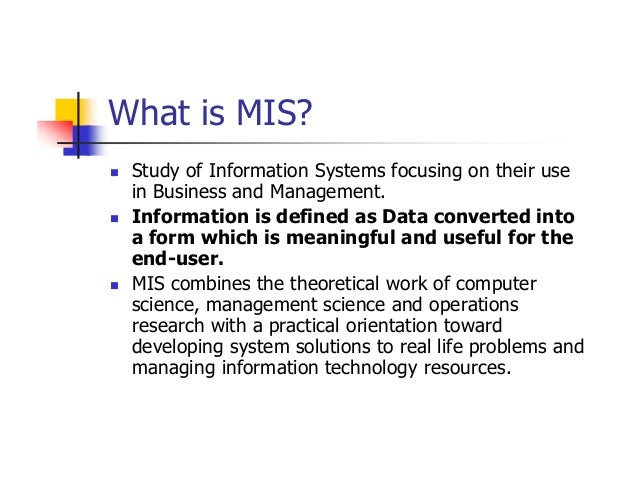Marketing Planning and Implementation
(part B)
by
Charles Lamson
Setting Out the Mission, Aims and Objectives
Initially, when starting the business, a mission statement should be determined to show where management wishes to strive to reach in due course. Usually, this statement is succinct, indicating an overall, even idealized, objective for the business. For example, it might be 'to become the leader in the mobile phone market'. which in turn could be interpreted as being the provider of the most mobile phones in terms of sales and/or markets share. It might also mean developing the most innovative mobile phones or of providing the 'best' customer service in the mobile phone market. 'Best' can be interpreted along a number of criteria such as in terms of new customers achieved, retained customers, customer satisfaction surveys, etc.
 |
The aims, or objectives, of the business need to be defined as precisely as possible to match the requirements of the mission statement. They should follow the marketing strategy that has been determined, i.e. product differentiation, product development, cost focus or whatever other strategic direction that is favored.
Market Segmentation, Targeting and Positioning
At this stage it may be appropriate to undertake some form of market segmentation, targeting and positioning. Segmentation, targeting and positioning can be directed towards the market in terms of what type of mobile phone to introduce, for what group of potential customers. Assuming the market could be divided into innovators and laggards in taking up the proposed product. If the latest technology was favored it could be directed to younger, wealthier adults in their late 20s and early 30s who would be most likely to be innovators ready to consider the novel characteristics of the product. Alternatively, it could be found that there remains a sizable market of potential customers who are not particularly concerned to have the latest technological developments, the laggards, who would prefer the well tried, lower cost phones. In this case an older age group, perhaps 45 years and above, might be targeted. Consideration could be made not only concerning the demographics of the selected market segment but also its geographical location. The more sophisticated and expensive phone could be targeted towards the markets in Germany, Hong Kong, Sweden and the UK, whereas the established phone might be directed towards less developed markets and economies. In this way, segmentation can take place on a number of criteria, but care should be taken that the process of segmentation does not become too burdensome as to be ineffective. Appropriate marketing positioning strategies will need to be put in place to enable the targeted customers to become aware of the product, or service offering.
Marketing Mix Implications
With the increasing trend to outsource much of the internal operations care has to be taken that all concerned are aware of what is expected to be done. Usually a project brief is prepared and agreed by all the persons involved. While the practice of preparing briefs for contracts is commonplace for subcontracting, it is less common for internal arrangements. Sometimes the excuse is made that there is not time to prepare a comprehensive brief, or it may be felt that those involved know the project well enough not to have to formalize it through the preparation of a brief. This is a mistake. Time taken to clarify what is required of those involved in undertaking the work should help to avoid misinformation and will improve the end result. The better the understanding of the objectives of work the better will be the outcome of project.

Test Marketing
Test marketing at the introductory stages of the product life cycle (PLC) and even as the product is delivered during the development and mature stages can be helpful in management decision making. Test marketing can be undertaken using internal staff, in particular if it relates to testing in the industrial market. In this instance, internal staff are more likely to have the necessary expertise regarding the product technology and be better able to communicate with actual and potential customers. However, there is the risk that internal staff may be prone to bias in favor of introducing a product with which they have become very committed. In the case of new products entering the consumer market, it is more usual to have test marketing sub-contracted to a marketing agency. While costs may appear to be higher, the benefit is that the firm will not need to employ specialist staff on a permanent basis, but rather will use the services of the marketing research agency as, and when, necessary. There is the added advantage that the marketing research staff will be unbiased as to the outcome of the research findings.
Research Brief
Whatever the chosen situation, a marketing research brief should be drawn up for the project and agreed by all concerned. The objectives of the project have to be clearly defined. An indication of the resources and financial implications should be made and agreed in the final contract. Generally, the project brief is put out to tender and directed to appropriate marketing research agencies that, in turn, submit their proposals and budgets for consideration. Once the offerings have been examined, one will be selected to undertake the project and the formal contract drawn up and signed. Details as to who within the marketing research agency will undertake the research have to be agreed. In particular, the level of senior executive involvement in the project is likely to be critical to its successful completion. Usually the firm appoints a coordinator from within to liaise with the marketing research agency and monitor the progress of the project. In this way any problems that may arise can be dealt with appropriately and possible misunderstandings minimized.
The planning process for undertaking any marketing research should be considered carefully within the overall marketing plan.

Product
Products and services can be introduced at various stages PLC. Those with the highest risk are those which are new to the market. Test marketing can be used to support marketing management decision making regarding specifics of product development.
Price
Careful monitoring through the MIS (see Figure 1 below) can check pricing issues. Internal sales records can show the relationship between prices and sales achieved, providing an indication of the product's position in the PLC. Test marketing undertaken before introducing the product, and sometimes even at the more mature stages of the PLC, may be used to determine favorable pricing strategies. Pricing adjustments can be made in the light of changing conditions influencing consumer demand and competitor activity.
Figure 1 What is MIS?
 
Promotion
As part of the marketing mix it is usual to undertake some form of promotional activity. This is likely to include both 'above the line' paid-for advertising using the media and 'below the line', including sales promotion, sponsorship, personal selling and public relations (PR).
As for test marketing, it is common practice for responsibility for consumer product advertising to be contracted out to advertising agencies. In the same way as for test marketing, a project brief has to be prepared and put out for tender to targeted advertising agencies. Once an advertising agency is selected, the final project brief is drawn up covering details of the project contract that has to be agreed by all parties concerned. In particular, the resource implications have to be formalized. As the project progresses it is useful to develop a detailed creative brief to provide a framework for the creative team to work.
For industrial products and services it may not be necessary, or appropriate, to use advertising agencies at all. Rather, any promotional activity is likely to be undertaken within the firm, using internal staff who would have the necessary specialist technical expertise, e.g. sales engineers or even a dedicated advertising section operating within the marketing department. The firm's personnel can prepare and place advertisements directly in the technical press. Similarly, for trade exhibitions internal staff usually organize and develop display material for the event.
Whatever form the promotional communications take, it is likely to involve a relatively high share of the marketing budget. As such it is important that it should be planned carefully so as to make an effective contribution to the marketing effort, especially in terms of resource implications. As with contracting out test marketing to marketing research agencies, someone from within the firm should be appointed to liaise with the advertising agency. The agency will have its own account planner dedicated to monitoring the progress of the contract who should report to the firm's representative. In this way, understanding and trust between the various parties involved are increased and the contract is more likely to be completed to the satisfaction of all concerned.
Place: Channels of Distribution
Decisions require to be made concerning the 'place' or choice of channels of distribution to be used to get the product or service to markets. These may take the form of traditional options from the producer going direct to the end user to introducing various levels of intermediaries along the value chain. Increasingly, the role of the Internet for online shopping is adding another dimension to available channel choices. It may be used on its own or in conjunction with the traditional options between the producer and intermediaries such as wholesalers and retailers.
Plans should take into account that while a favored channel route might be favored, it may not be possible to gain access to the desired channels. The leading grocery retailers are unlikely to give shelf space to new products that they have not sanctioned. Rather, new products have to proceed through a laborious process to gain acceptance. Not only do the products have to be on the retailers' favored product range list new suppliers have to pass rigorous tests such as favorable test marketing evidence, competitive costing and adequate supply potential. Marketing plans should accommodate the considerable time that it can take to gain product acceptance from the retailers.
Services
For services additional elements of the marketing mix should be considered, as follows:
People
The persons involved in providing the service make a critical contribution to the service experienced by the end user that will influence possible repeat business and word-of-mouth promotion. For example, while a reputable chief can produce a formidable dish, it requires to be served in the expected manner by a pleasant, courteous waiter or waitress. Should there be a lack of rapport with the waiter or waitress and the customer, no matter how well prepared the dish might be, the customer may fail to appreciate the supporting evidence and not return to the restaurant. Indeed, the customer may even openly criticize the service to other friends, thereby deterring their using the restaurant.
Processes
The operational processes whereby the service is provided influence the ultimate service experienced. Taking the example of the restaurant, numerous operations have to be undertaken to get the chef's dish to the customer's table. A menu has to be prepared. Food has to be bought from the marketer or wholesaler, it has to be cleaned and cooked; the dining room tables have to be set; someone has to take the customer's order and to serve the meal. Drinks need to be ordered and served. The bill has to be made out and so on. All these procedures require to be undertaken efficiently, often by different persons, so that the customer can experience the appropriate service and end product.

The Physical Environment
The actual environment in which the service is provided also influences the service experienced. Referring to the example of the chef's dish and the restaurant, the ambiance of the room in which the chef's meal is served will reflect on the way in which the customer will judge the quality of the dish. For example, if the restaurant is cold the customer is unlikely to enjoy the meal in the same way as if he/she were sitting cozy in front of a warm log fire. Smells may also influence customer reaction. Consequently, grocery retailers often introduce baking smells at the front entrance of a superstore to encourage customers to purchase more bakery products.
Resource Implications
Time
The marketing plan should show time markers as to when the various activities to get the product to market will take place. The most accurate estimates of time expectations should be made and some allowance for unforeseen occurrences should be allocated. It is most likely, especially for new products coming on to the market, that lead time to reach goals will be longer than initially expected. Problems of an unexpected nature may be encountered, e.g. excessive time to obtain necessary licenses to operate, difficulty in obtaining suitable premises in the desirable locations or simply challenges in production, hiring suitable staff, etc.
It is usual to show the proposed time schedule on a Gantt chart (see Figure 2). Time is shown across the chart, with the various tasks listed below so that the timing and duration of the tasks can be given. In this way a clear view of what is to be done and when it should be undertaken can be made. Monitoring for any overriding (or shortfall) of these estimated times can warn management of possible problems to consider.
Figure 2 Sample Gantt chart
 
Human Resources
Planning needs to take account of the recruiting and training staff necessary with the desirable expertise to be reliable and trustworthy to undertake the various activities highlighted in the plan. Estimates of the costs involved should be made, with allowances being made for possible absenteeism, holiday cover and so on. Again as with other planning estimates, care should be taken not to err on the too optimistic side by underestimating costs. It is preferable to be cautious, with some degree of overestimate concerning likely staffing costs allowing for any unforeseen situation.
Finance
The finance necessary for the implementation of the proposed plan has to be realistic, reflecting the needs of undertaking the various parts of the plan. Care has to be taken not to overstretch resources. Often a two-pronged approach to deciding on the specific budgets for the marketing plan has to be made. Consideration of the finance likely to be available will be reflected in the level of investment in the marketing mix components. Equally if it is felt that to reach the desirable objectives of the plan in terms of given sales turnover, or market share, a given level of finance is necessary, then that should be sought if at all possible. Should it prove to be that the desirable level of finance is not readily available, serious consideration should be made as to whether or not to continue with the venture. Certainly it may prove necessary to revise the initial proposals in the plan to match the available resource. For example it may be more appropriate to take a longer lead time to take the product or service to market, or to target a more local customer base. It is critical that care is taken to ensure that the finance available matches the needs of the agreed marketing plan. Various enablers, including the banks, shareholders and other stake holders, will influence decisions regarding the availability of finance to proceed.
It may be necessary, especially for a new product or service being introduced to develop a contingency plan that considers various scenarios. In this case it is even more critical to monitor closely the progress of implementing the plan and to be aware that, should conditions necessitate, modifications can be made to suit the conditions encountered in the market.

Conclusion
Effective planning is critically important for the successful implementation of marketing processes. Preparing a marketing plan involves careful consideration of the available market data and matching that to available resources to determine the most favored marketing mix to put the proposed plan into practice. Financial resource plays a critical role determining the levels of investment available for the marketing mix, i.e. for marketing development, pricing strategies, promotion and place, or channels of distribution decisions. A degree of flexibility in the implementation of the proposed is desirable, although it is appreciated that the agreed marketing plan to be the framework for the scheduling. The plan should be a guide to be followed if at all possible, but market conditions or unforeseen circumstances may precipitate some modifications to be introduced. In this case, appropriate adjustments will have to be made to the original plan, and, once again, all parties involved should agree and understand the changes made.
*SOURCE: FUNDAMENTALS OF MARKETING, 2007, MARILYN A. STONE AND JOHN DRESMOND, PGS. 399-415*
END
|

No comments:
Post a Comment